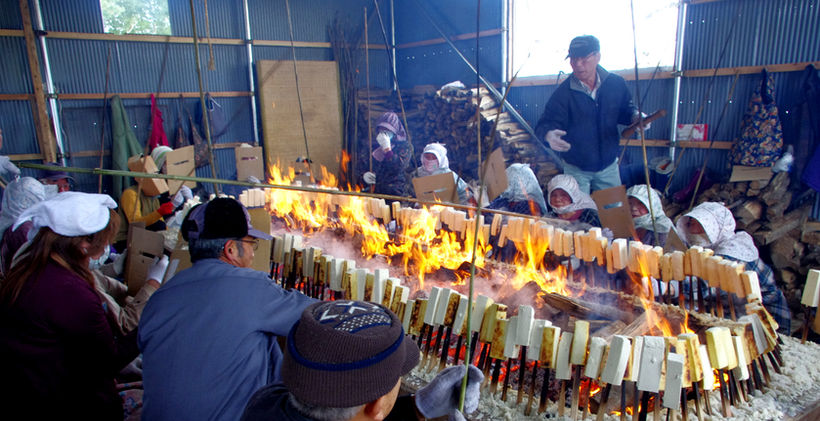Kurokawa Noh
Kurokawa Noh is a traditional Noh performance ritual that has been performed in the village of Kurokawa in the Kushibiki region since the Muromachi era (1336–1573) as part of the Ōgisai Festival. It was designated as an Intangible Cultural Asset since 1976, and is performed annually at the Kasuga Shrine by the shrine worshippers as an offering to the gods. This type of Noh has old, historical roots, consisting of an ancient repertoire that is still practiced in Kurokawa today. Preparing for these performances has become an important part of life in the community. Kurokawa’s 250 households are divided into the upper-troupe (kamiza) in the south and the lower-troupe (shimoza) in the north.
This performance of Kurokawa Noh is held from 1–2 February, during the winter Ōgisai Festival. Freeze-dried tofu (shimi-dōfu) is considered a staple during this occasion. In addition to having been a valuable source of protein during Tsuruoka’s harsh winters, eating tofu instead of animal protein was a method for townsfolk to show their devotion to the gods. As such, the Ōgisai festival is also affectionately known as the “Tofu Festival.”
Interestingly, freeze-dried tofu is served differently in the upper- and lower-seat households, despite their belonging to the same village. While both types of households serve it with boiled burdock root, upper-seat households specialise in serving it warm with a sauce made using Japanese peppers and walnuts; lower-seat households serve it cold alongside hot soup seasoned with sake and soy sauce.
Meal preparation for this festival is labour intensive, and can often take up to a year from start to end. An example of one such dish is grilled tofu (tōfu-yaki). Days before the start of the festival, inhabitants of Kurokawa gather together in a small room, spending days skewering thousands of tofu pieces before leaving them to freeze in the cold winter air. The frozen skewers are then char-broiled over a large open hearth during the festival.
The unique cuisine and traditions of Kurokawa Noh can only be appreciated by the general public during the Ōgisai festival. There is a small museum that displays over 250 Noh masks and 500 Noh costumes for the visitors to learn more about this Intangible Cultural Asset.





